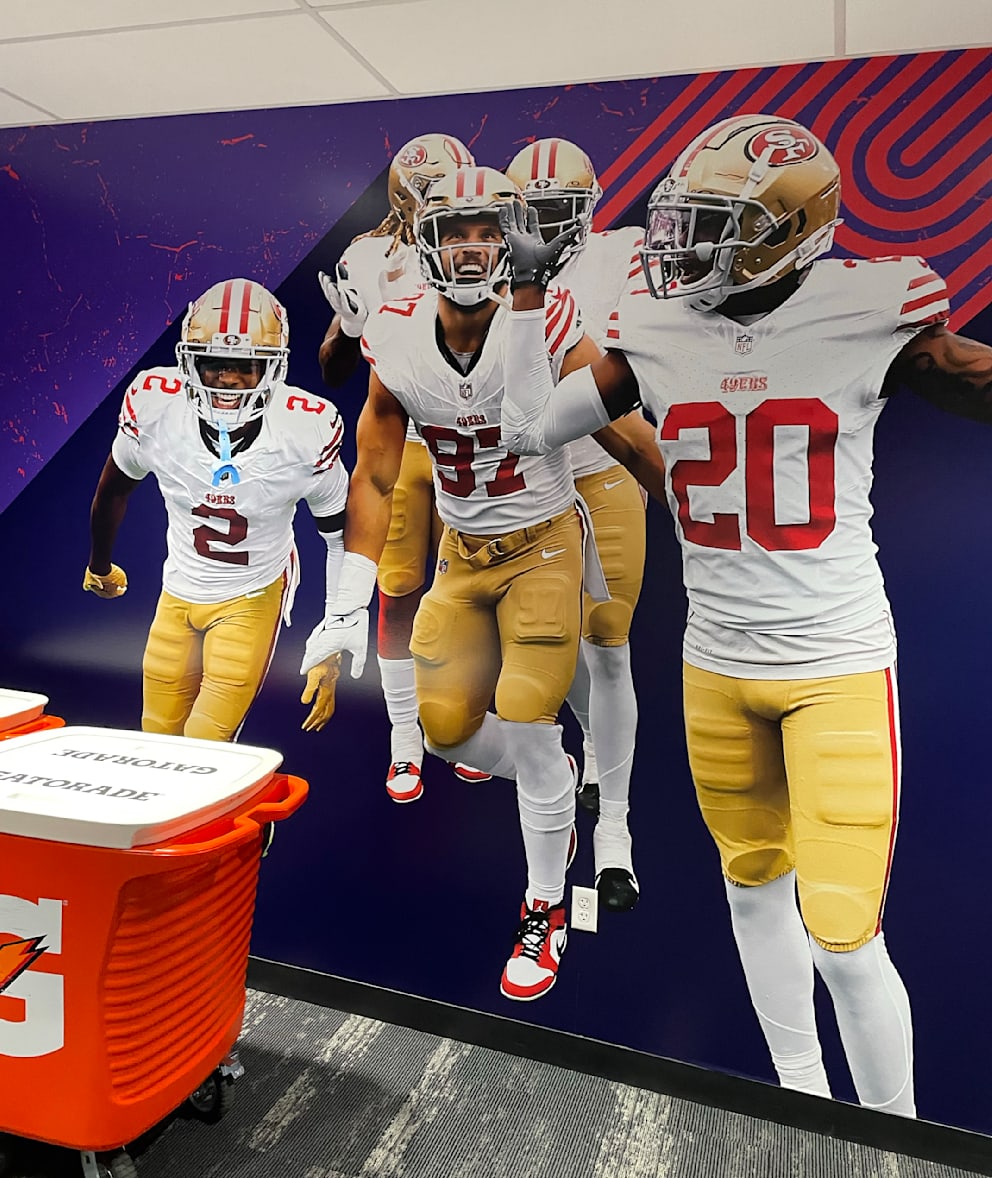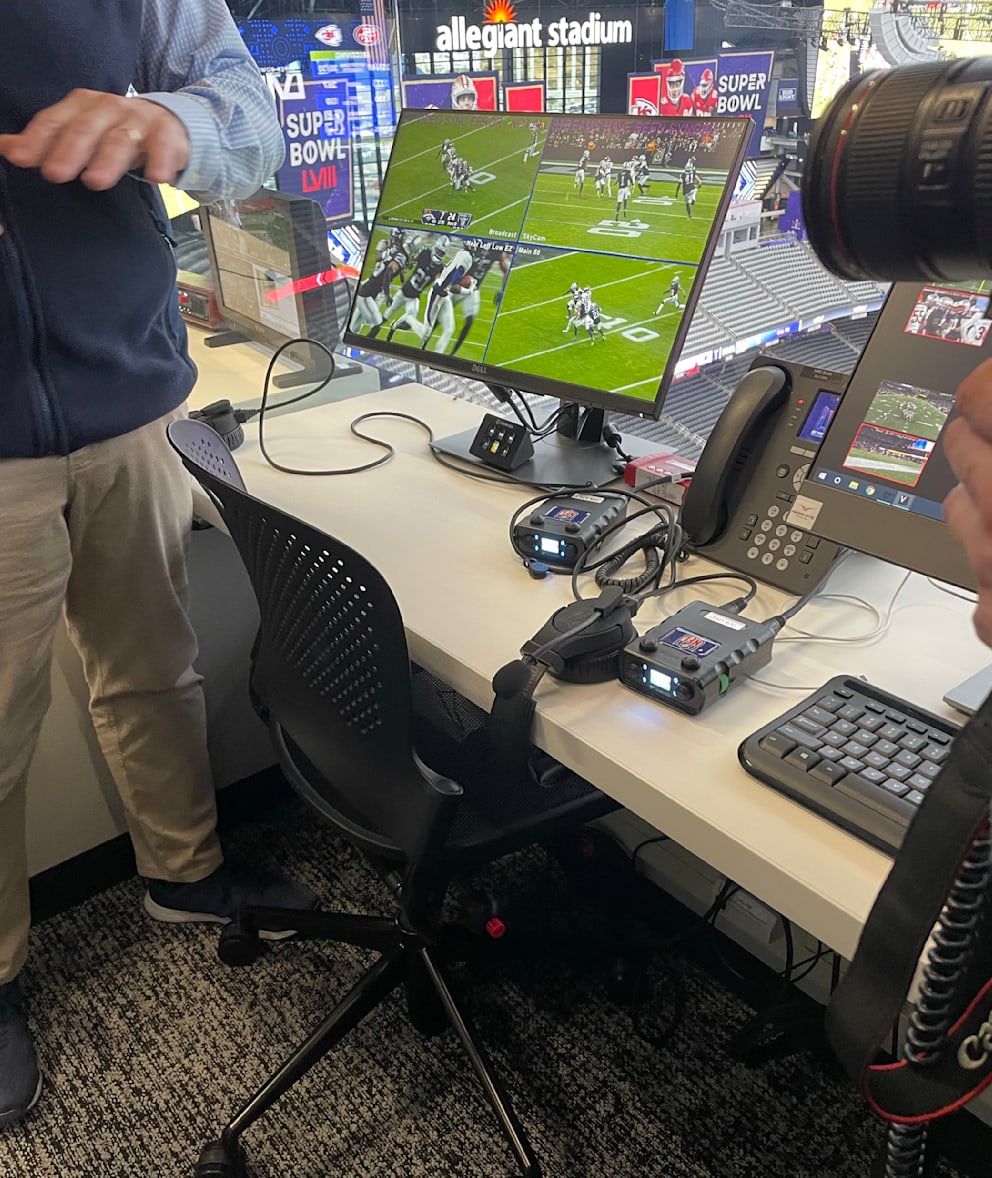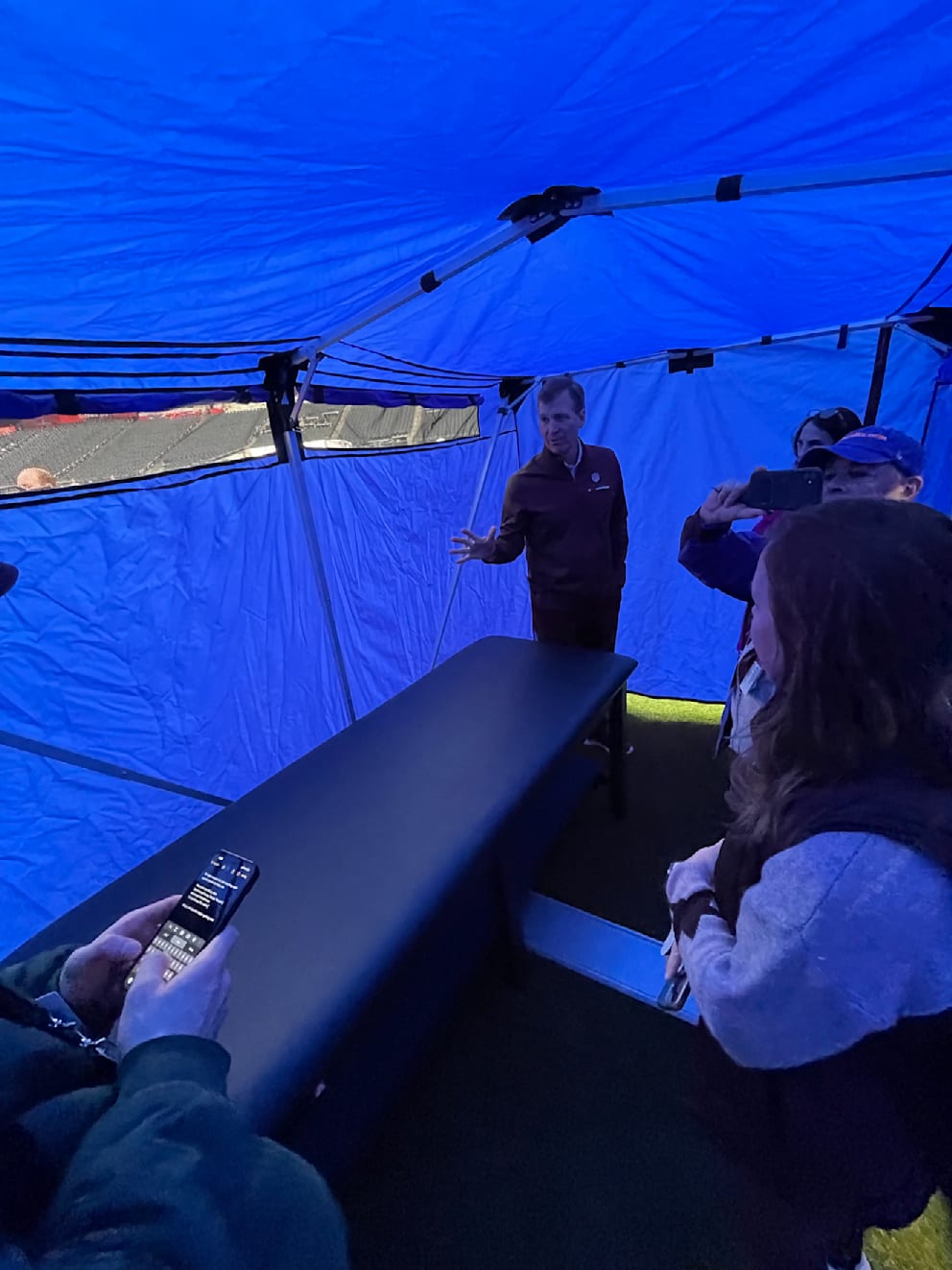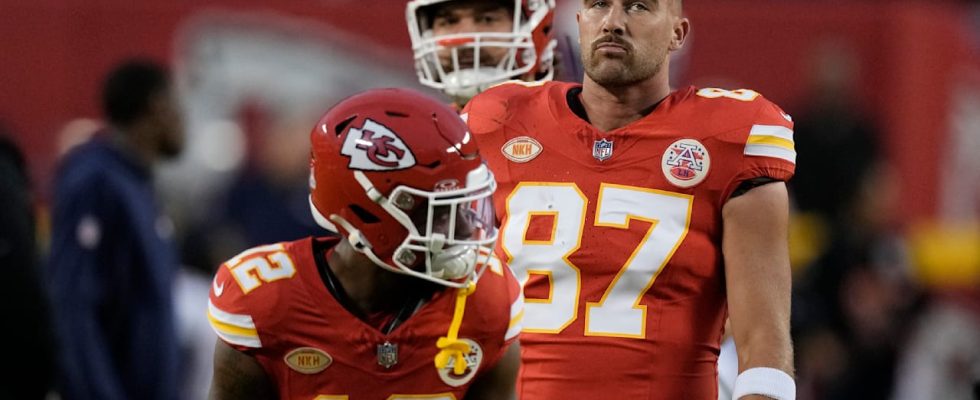A few days before the Super Bowl, there is a lot of activity in the extensive corridors of Allegiant Stadium. Hundreds of workers are preparing the stadium in Las Vegas for the NFL finals.
BILD was the only European media that was allowed to take a look behind the scenes before the Super Bowl.
Wedding bells before the Super Bowl Vegas madness over Taylor Swift
Past endless rows of shelves containing everything from toilet paper to lawn mowers to replacement goal posts that could be needed in an emergency at the Super Bowl, we go into the guest cabin. The San Francisco 49ers will move into these today.
Everything is already prepared for the Californians: Containers of equipment are in the cabin, as are packages of razors and deodorant.

There were dozens of boxes in the 49ers locker
There is a clock on the wall that shows the length of the half: 28:24 minutes. During the break the clock ticks down while Usher performs his show on the lawn. There are countless bottles of isotonic drinks in every flavor imaginable in the refrigerators. The NFL redesigned the locker rooms specifically for the Super Bowl. Where the Las Vegas Raiders lettering would otherwise be on the walls in silver and gray, the faces of the final teams can now be seen. Each player has their own safe in the locker.
In the middle of the room is Dr. Allen Sills, the NFL’s chief medical officer. The Vanderbilt University physician and his team are responsible for making collision sports as safe as possible for players. “We want to minimize the risk of injuries so that players don’t get hurt in the first place,” explains Sills.
Next to him is a board with a poster that hangs on the wall in every NFL locker room. The most common helmet models are listed there, sorted by safety level. Dark green means the latest model with the highest level of protection, names highlighted in red indicate that this brand will be banned after the season.

The 49ers-style locker room
Changes to equipment are usually poorly received by players. As creatures of habit, they usually wear their helmets for several years. “The league is going to great lengths to convince players to ditch their old helmets. We talk to athletic trainers, equipment managers or physiotherapists so that they can convince the players of a safer model,” says Sills.
To collect data that could be used for prevention, the NFL is equipping players with sensors in their helmets, shoulder pads and even their mouth guards; In addition, every step the professionals take on the lawn can be tracked thanks to a GPS transmitter.
Dr. Jim Ellis ensures that medical care is ready to respond appropriately in the event of an injury. “We have a specialist in the stadium for every conceivable emergency,” says Ellis, who checks all the equipment with the medical team an hour and a half before kickoff and also speaks to the referees to ensure smooth communication in the event of an emergency.
Ellis also ensures that injured players are taken to the appropriate hospital during international NFL games. “In every city, we know which emergency requires the player to be taken to which hospital in order to receive optimal care. There are two hospitals in Las Vegas ready for the Super Bowl.” Air transport to a distant special clinic is also available for the duration of the game.
High up, almost under the stadium roof, is a small room where medical observers and team doctors from both teams watch the game during the Super Bowl. With the help of 105 cameras (normally there are 64), every player can be observed after a possible injury. Especially after head hits. “After such an action, we follow the player with the cameras and look for warning signs such as shaking, tapping on the helmet or an unsteady gait,” explains Sills in the small cabin with the countless monitors. The athletic trainers of both teams would also be consulted in an emergency, as they know the players’ movements in detail.
If the medical team suspects an injury during the game, they can interrupt the game at any time by pressing a small black button to initiate a medical time-out.

With 105 camera angles, medical observers can see whether a player is injured or not. In front of the phone is a device with two buttons. If one of them is pressed, the referees stop the game
“We had 32 of these interruptions this season, which is a record. We don’t want any injured players on the pitch,” emphasizes Doctor Sills.
The NFL medical team consults with the respective team doctors on the sidelines, particularly in the event of possible concussions. “Once in 500 cases the doctors disagree and the conservative option is chosen. If one of those involved says concussion, then the player has to leave the game first.”

All camera perspectives converge in the doctors’ command center
Down on the pitch, where the pitch is being prepared, Sills reveals a secret. The doctor opens the small blue tent that stands on the sidelines of every NFL game and into which injured players retreat during a game for initial examination.
“It’s a small shelter that immediately improves the atmosphere between the doctor and the player,” said Sills.

Lots of space in the legendary blue tent
It’s about making the best medical decision, whether in a regular season game or in the Super Bowl.

